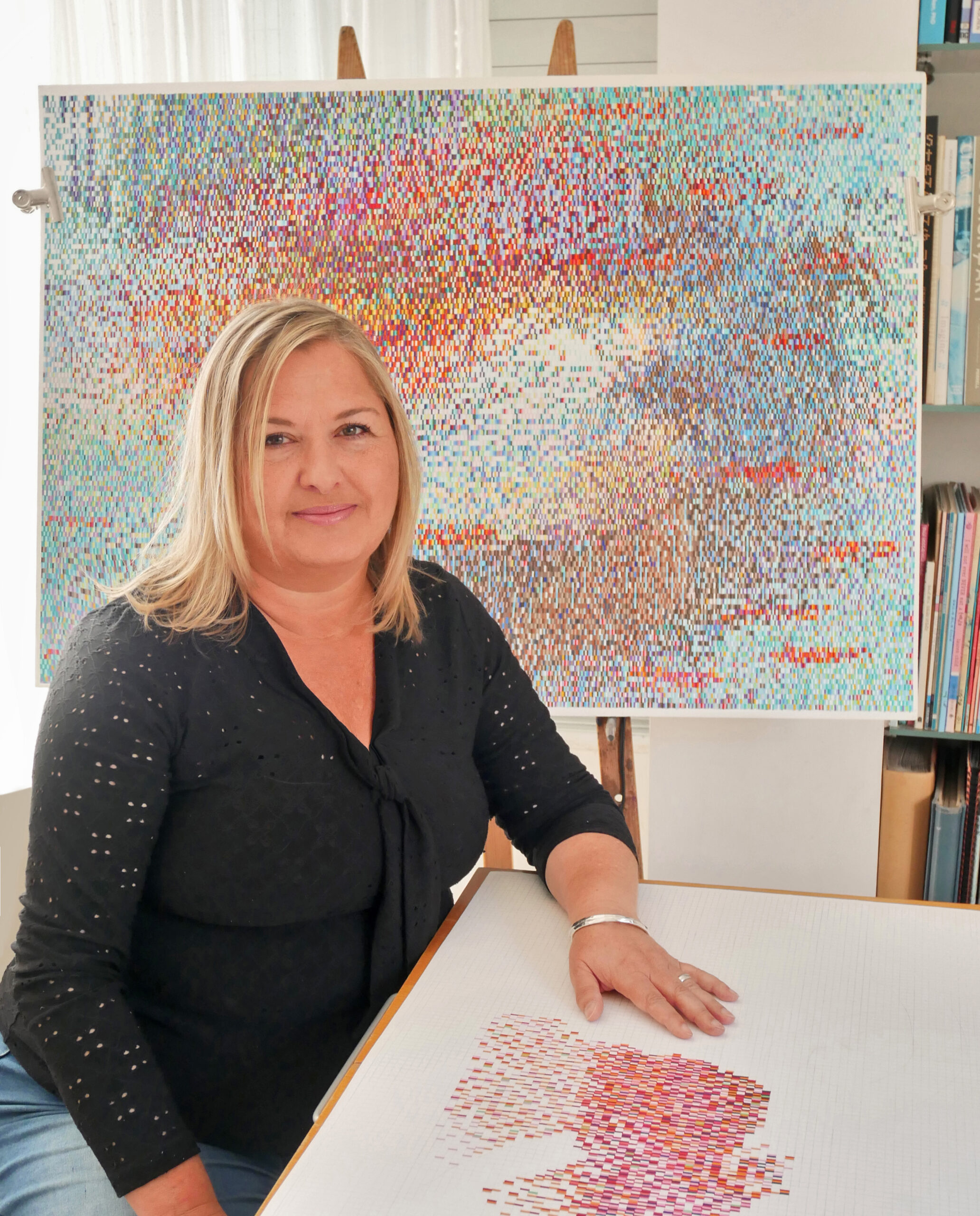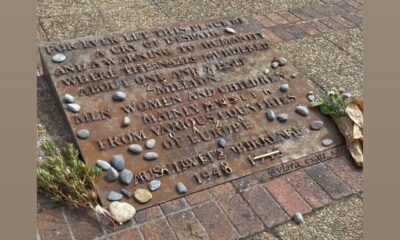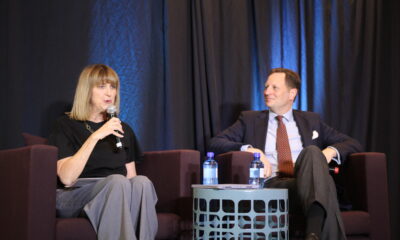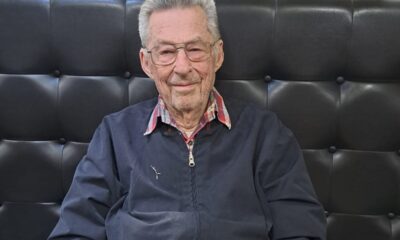
Holocaust

Seeing six million, one brushstroke at a time
Published
12 months agoon
What does six million actually look like? And what would it be like to contemplate each life extinguished in the Holocaust, marking their loss in some way? These are the questions that are driving Capetonian olah, Liora Blum’s, Six Million Project, in which she’s painting six million small rectangles. The whole project could take two decades.
As the daughter of a Holocaust survivor, “I’ve always been obsessed with the Holocaust, and have tried to understand antisemitism then and now,” says Blum. “Last December, sitting at my computer, I wondered how much six million actually is. I thought of making an installation to visualise it, but quickly realised I couldn’t afford to buy 6 000 000 paper clips or matches. What I did have was plenty of gouache – my favourite kind of paint,” says Blum, who has always loved to draw and paint and has her own graphic design agency.
“If I painted six million brush strokes, what would they look like all packed together? The biggest page of quality watercolour paper I had measured 1m x 70cm. I worked out that one of these pages could fit sixty thousand small brush marks (6mm x 2mm each) and therefore, one hundred of these pages would make six million. It seemed a bit insane, but I was curious to see if it was possible to do. I marked out a grid with a 2H pencil and my extra-long ruler. And then I began to paint…”
Blum didn’t tell anyone about it at first, “Because I was a bit ashamed of being too obsessive about the Holocaust. After two weeks, I found the courage to explain to my family what I was doing. Everyone thought it was a great idea. Visitors were instantly drawn to it, without knowing what it was.”
Delving into her family history, Blum says, “My late father, Sanyi Glazer, was born in Hungary in 1932. His family lived in a town called Oradea Mare [now part of Transylvania]. As the war progressed, my grandfather, Yenö Glazer, sensed that Budapest would be a safer place for them, and they moved in 1941. Dad was the middle of three sons, who were followed by a younger sister in 1944. The family was forced into the Budapest ghetto that year, and my grandfather was enlisted into the Hungarian army for slave labour, never to be seen again.
“At the end of the war, the family were lined up on the banks of the Danube by the Gestapo, about to be shot, and were miraculously saved by the approach of the Russian army.
“Realising that [then] Palestine was the only place for Jews, my grandmother, Erszabet, sailed with her children on the legendary Exodus, only be sent back to Hamburg, Germany, for a year and a half. When they eventually arrived in Israel in 1948, it was on the day the state of Israel was born! My mother, Linda, from Cape Town, met my father in Tel Aviv in 1969, and they were married in the same year. They moved back to Cape Town and started a family.”
Blum describes her father as a “fun, loving father to me and my brother, but he couldn’t shake off his demons. He shared his helplessness in the pre-war years, when he was taunted by antisemites. He remembered the hunger, the cold, the bombing, the terror. He recounted how he begged for potato peels to feed his nursing mother and baby sister. I felt his raw despair, waiting for his father who never returned. His grandparents were killed in Auschwitz. I heard him shouting out from nightmares, and was deeply affected.”
Her father-in-law, Avraham Blum, was also born in Hungary. He was transported to Auschwitz and lost his entire family. “He came to Israel after the war, where he met his wife, Ninette, and they had four children. Avraham is 93 years old and lives in Haifa. He loves Israel with every fibre of his being.”
Blum was born in 1970, and went to Herzlia. “I loved school, and was blessed to be in an environment that was fertile for the mind and the soul.” She now lives in Ra’anana, married to Ilan, with two daughters.
She paints the rectangles at home. “The paintings call me from the moment I wake up until the moment I go to sleep. When I’m painting, I listen to audio-books about the Holocaust or documentaries about World War II. On weekends, I paint for six to eight hours, and during the week, one-to-two-hour sessions. I would like to speed up the process and turn this project into my day job. This is why I intend to seek funding for it.”
The rectangles aren’t painted in a specific sequence. “I choose colours from my intuition. I don’t want patterns because I want to show the individuality of each person. No one is more important than the other. Each colour is vibrant, and tells its own story. Some are grouped by hue or shade, there are the occasional ‘twins’ or ‘triplets’, and some may form a ‘family’, but it’s all in the eye of the beholder. I paint spontaneously with only a rough overall plan.”
Her ultimate goal is to “to see for myself what six million looks like. I would also like this project to help fight antisemitism, combining art and maths to create a shock. People, especially the younger generation, will get to visualise the numbers of the Holocaust, and the catastrophic results of an antisemitic political platform.”
There are still about 150 000 Holocaust survivors in Israel, many of them living in poverty. “I would like the proceeds from this project to be channelled directly to them, to allow them to live out their last years in comfort,” says Blum. “My dream is to exhibit the full 100 pieces on one huge wall or construction at a Holocaust museum.”
She would love to match names to the rectangles. “Ideally, I would like to link each rectangle digitally to the database of the [Yad Vashem] Book of Names. My idea is that the whole image will be scanned and that when a viewer rolls their mouse over each rectangle, they will be able to see the name of a person, and clicking on it, they will be able to view the notes about that person. I hope that people will be able to share the names of family members with me. I haven’t yet figured out how to deal with something this huge, but it would be an ultimate goal.”
She asks that people support the project by “liking and sharing my posts about it on Facebook and Instagram, and my Patreon page, which would give me more time to paint. As I move forward, I will upload digital scans of the paintings, so people can purchase their own rectangle. The proceeds will go directly to Holocaust survivors and Holocaust educational projects.”
Blum has been asked if people can take part in the painting and says she’s “still trying to figure that one out”. However, she recently hosted a gathering at her home on the eve of Yom Hashoah, where four guests were invited to paint. “I let everyone choose the colour they wanted, explained how to paint the small areas with my super-fine brushes, and let them paint in any area that had not yet been filled. One participant said, ‘I’m honoured to have painted some of those rectangles. Never has it hit home like this before.’”










